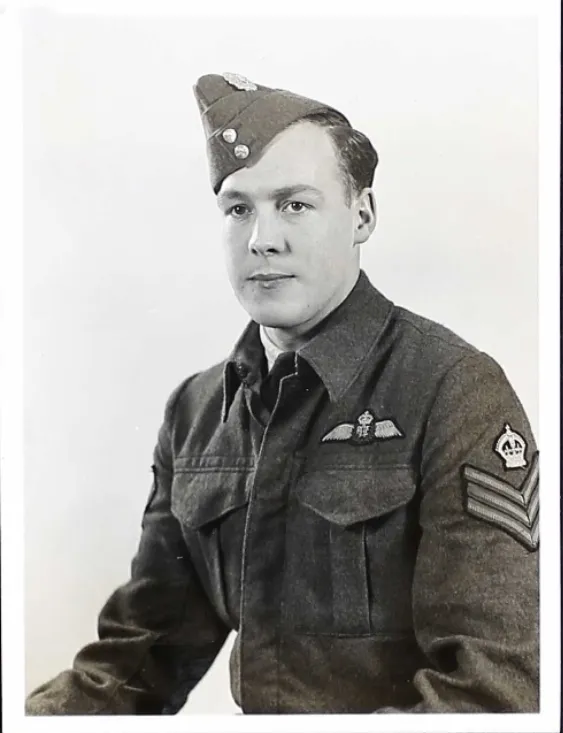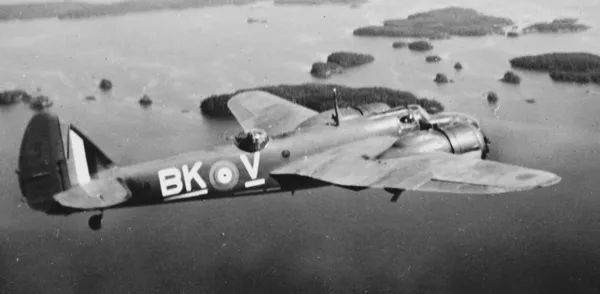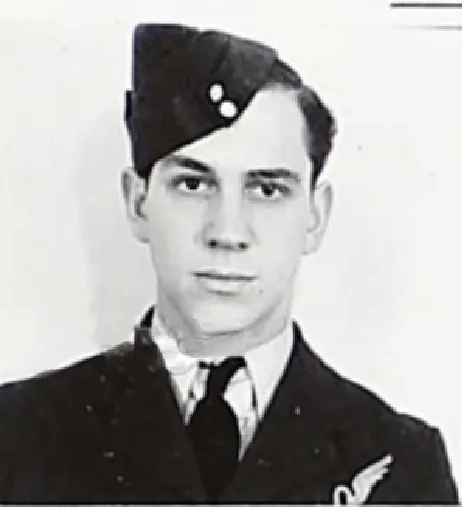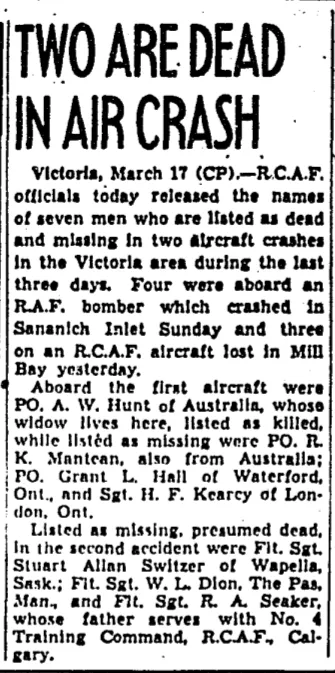Dion, Walter Leon
Killed in Action 1943-03-16


Birth Date: 1919-May-11
Born:
Home: The Pas, Manitoba
Enlistment:
Enlistment Date: Unknown
Service
RCAF
Unit
122 Sqn- Squadron
Base
RCAF Stn. Patricia Bay, BC
Rank
Warrant Officer 2
Position
Warrant Officer 2
Service Numbers
R/116350
Home
 The Pas, Manitoba
The Pas, Manitoba
First Burial
 Ottawa War Memorial, Ottawa, Ontario
Ottawa War Memorial, Ottawa, Ontario
This incident involved multiple aircraft:
- Bolingbroke Mk. IV Serial: 9084
All the above aircraft in the above list are referenced in this report.
Bolingbroke 9084
Bristol Bolingbroke

Fairchild Bolingbroke Mk. IV, RCAF (Serial No. 9118), coded BK-V, No. 115 (Bomber Reconnaissance) Squadron, Patricia Bay, British Columbia, 1942.
The Bristol Fairchild Bolingbroke was a maritime patrol aircraft and trainer used by the Royal Canadian Air Force during the Second World War. Built by Fairchild-Canada, it was a license-built version of the Bristol Blenheim Mk IV bomber.
In 1935, the British Air Ministry issued Specification G.24/35 to procure a coastal reconnaissance/light bomber to replace the Avro Anson. Bristol proposed the Type 149, based on its Blenheim Mk I, with Bristol Aquila engines to give greater range. While the Air Ministry rejected this proposal, a Blenheim Mk I, retaining its Mercury VIII engines, was converted as a Type 149 (Blenheim Mk III) for the general reconnaissance role.The nose was lengthened to provide more room for the bombardier, with the upper left surface of the nose being scooped out to maintain pilot visibility during takeoff and landing.
The longer range also fulfilled a Canadian requirement for a maritime patrol aircraft. Consequently, Fairchild Aircraft Ltd. (Canada) of Quebec started production of the Blenheim Mk IV as the Bolingbroke (the originally intended name for the Blenheim IV). This type was nicknamed the "Bolly". After a small run of aircraft constructed to British specifications, as the Bolingbroke Mk I, Fairchild switched production to the Bolingbroke Mk IV with Canadian and American instruments and equipment. These versions also included anti-icing boots and a dinghy. One of the early Mk IV variants was the Bolingbroke Mk IVW which was powered by two 825 hp (615 kW) Pratt & Whitney SB4G Twin Wasp Junior engines. Incapable of maintaining altitude on one engine, the normal bomb load was reduced to 500 pounds on these aircraft to compensate for the low engine power. The most-produced variant was the Bolingbroke Mk IVT trainer, of which 457 were completed. A total of 626 Bolingbrokes were produced.Wikipedia
Bolingbroke 9084
Bolingbroke Mk. IV 9084
To Western Air Command on 16 February 1943, for use in radio calibration work. Crashed into Mill Bay, 7 miles south of Patricia Bay, on 16 March 1943. Crash reported by No. 122 (K) Squadron at RCAF Station Patricia Bay, BC. The crew, Flight Sergeant W. Dion, Flight Sergeant R. Seaker, and Flight Sergeant S. Switzer, were all killed.1942-02-03 Taken on Strength No. 1 Training Command 2019-08-20
1943-March-16 Accident: 122 (COMPOSITE) Squadron Loc: Mill Bay 7 Mile South Of Patricia Bay Names: Dion | Seaker | Switzer
1943-03-31 Struck off Strength Struck off, reduced to spares and produce 2019-08-20
 Canadian Virtual War Memorial
Canadian Virtual War Memorial www.findagrave.com
www.findagrave.com

 Wikipedia Bolingbroke Bomber
Wikipedia Bolingbroke Bomber Harold A Skaarup Web Page
Harold A Skaarup Web Page Bolingbroke Bomber WWII
Bolingbroke Bomber WWII Bolingbroke - Kestrel Publications
Bolingbroke - Kestrel Publications